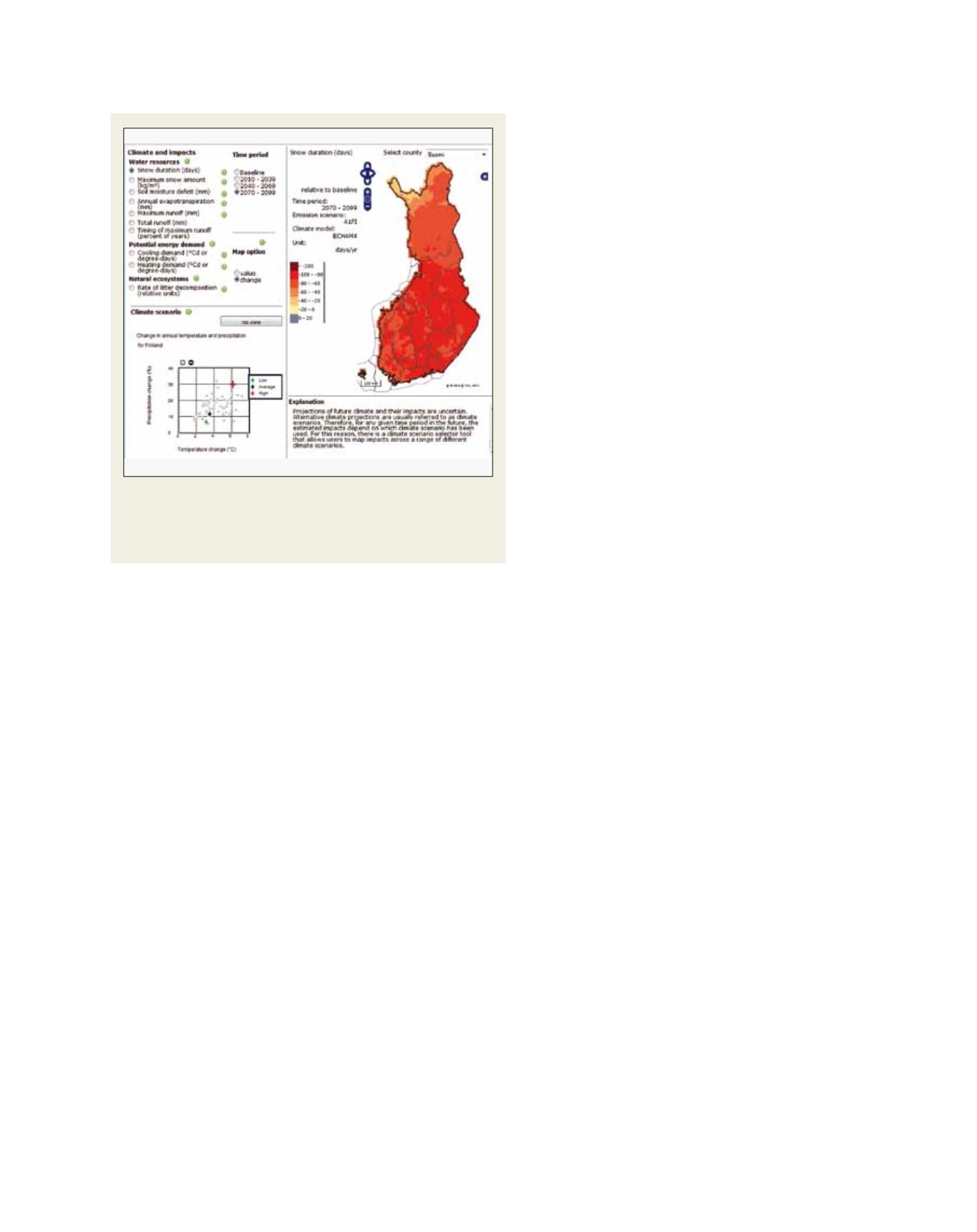

[
] 249
C
apacity
D
evelopment
of representatives of the partner organizations and the funding
organizations. Stakeholders of
Climateguide.ficomprise the users,
potential content producers and potential funding organizations
such as ministries and the Academy of Finland. A stakeholder
meeting is organized once or twice a year.
Operational decisions and implementation of the maintenance
and development tasks are the responsibility of the operational
team, which consists of the project coordinator, science editor,
representative of the communication departments of both SYKE
and FMI, and the head of the Climate Service Centre of FMI.
The portal development project was evaluated using feedback
from user seminars and the Internet (including Facebook and
the feedback form on the site), Google Analytics and the Steering
Group. These will remain the principal means for evaluation in
the future.
A partnership approach
It was necessary to form a consortium of partners to develop
Climateguide.fiportal. None of the partners institutions could
have produced the output by themselves or without other part-
ners. The
Climateguide.fiwebsite involved almost 100 experts
for varying periods of time during the three year development
phase of the portal; a few experts were employed full time.
Programmers, GIS experts, graphic designers and concept plan-
ners were employed with the external funding provided by the
Life+ programme.
Developing and designing the mode of information presen-
tation and how data is made available for visualization was a
laborious process involving climate science experts as well as
graphic and concept designers.
The texts, which have been written by experts
and reviewed by peers, avoid scientific terminology,
aiming for clarity and ease of understanding for the
lay reader. Interested readers are guided towards
advanced information sources and portal users can
give feedback on articles. This has proven useful, as
a few articles have been further defined according to
user feedback.
The users of the service are mostly not climate
information experts. With the help of the background
and guidance material in the portal, they are able
to research the issue from their own perspectives,
regions and sectors. Yet further information and
external support for interpretation of the informa-
tion may be needed – for example, when long-term
investments are made.
Innovations to meet needs
The concept of
Climateguide.fiitself is an innova-
tion. It provides a multi-organizational national
platform for climate change information and data
dissemination, where all aspects of climate change
are covered.
There are various other highlights, including:
• Several innovations to the structure of the portal –
for example, the sector-specific pages of Community
Response Wizard are divided into Mitigation,
Adaptation and Solutions
• The climate scenario selector tool in the Climate
Impacts map tool of the Maps, Graphs and Data
component helps users visualize uncertainty
3
• Visualizations
4
facilitate easy updates to the
information and data. They are also designed to be
easily transferable to other platforms and in different
languages
• The history of the Earth’s climate has been displayed
in a novel interactive visualization.
5
What next?
One goal for
Climateguide.fiis to become an established
starting point for citizens in their search for climate
change information in Finland. Another goal is for all
major climate change information producers – research
institutions, universities, ministries and public authori-
ties – to become content producers of Climateguide.
fi. The website can also be scaled up by developing
new tailored sections for various users on the portal.
However, providing permanent resources to guarantee
steady development of the portal, in addition to the
specific development projects, remains a challenge for
the future.
The concept for the portal can set a good example
for climate services in other countries. Exchange of
experiences from the development phase, user feed-
back from the operational phase and potentially also
exchange of modules between climate portals could be
beneficial forms of collaboration between climate serv-
ices and could strengthen and broaden climate change
communication.
Source: Finnish Environment Institute
Figure 4: Example view of the Climate Impacts map tool, showing modelled
snow duration for the future period 2070-2099. The scenario view also shows
the climate scenario selector tool.
















